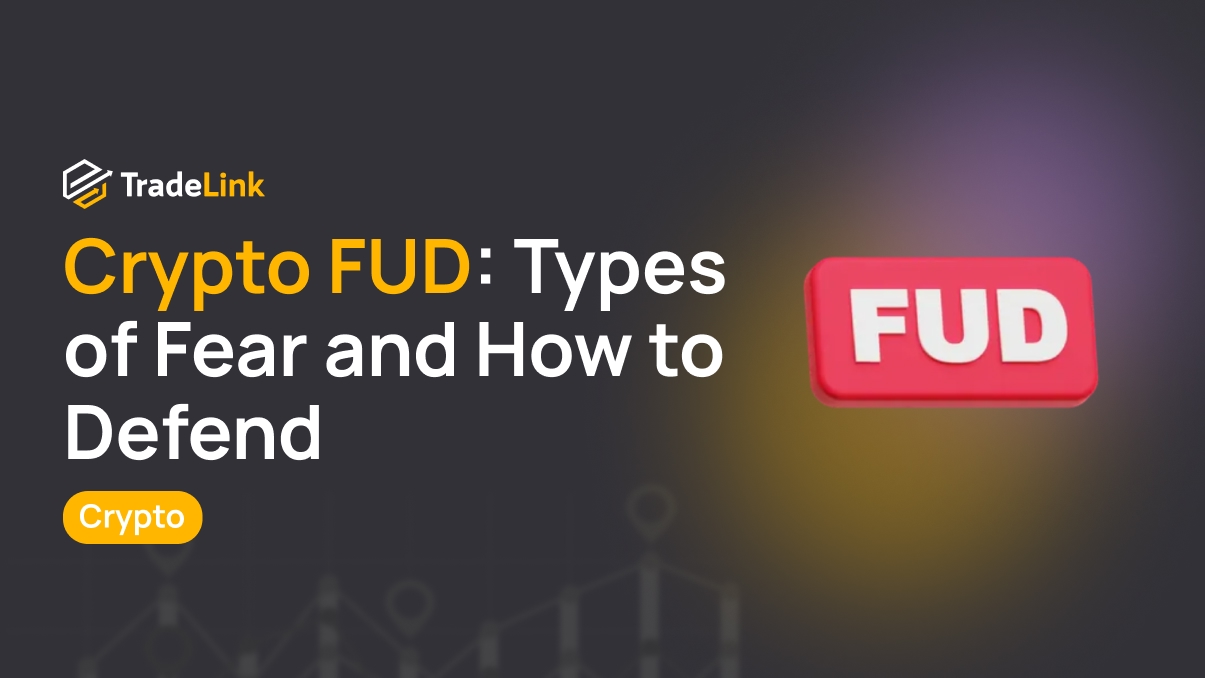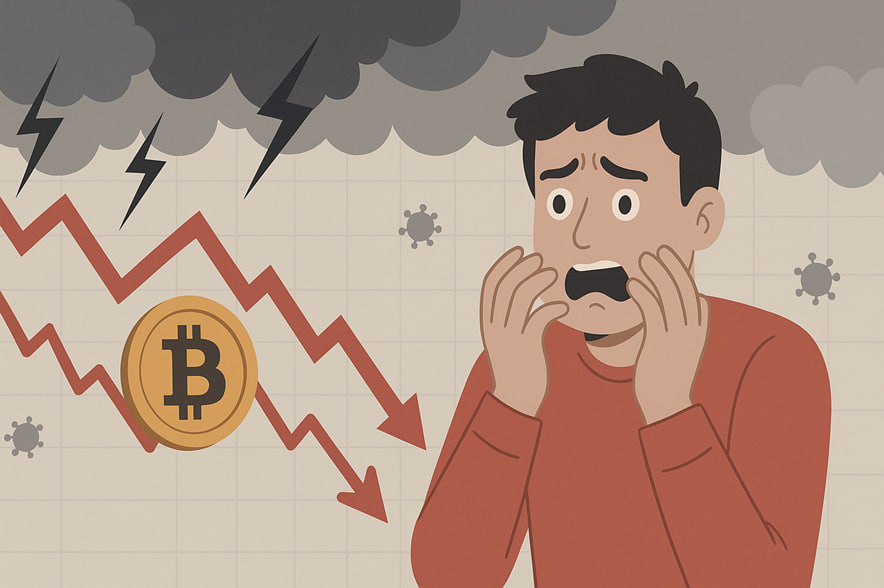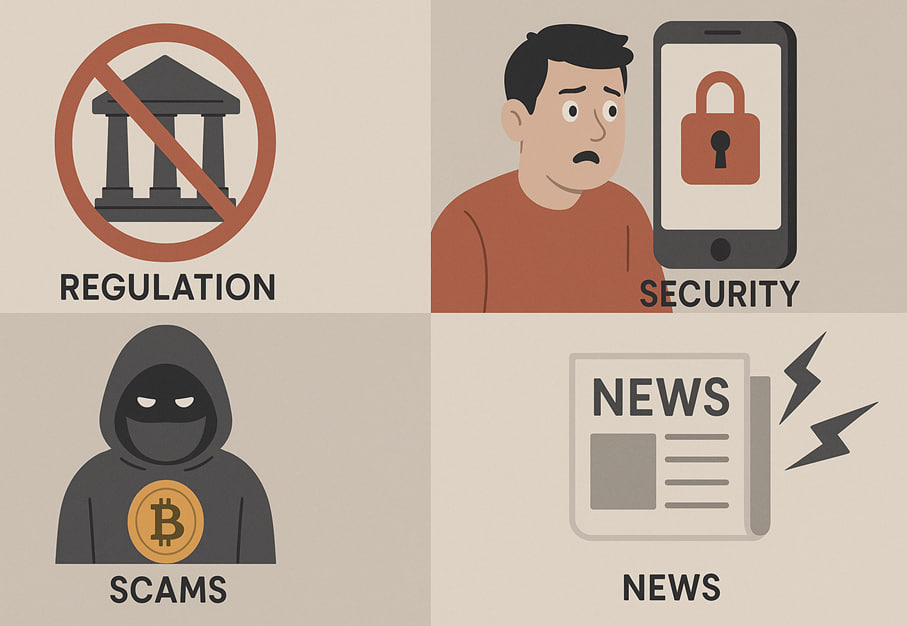Crypto FUD: Types of Fear and How to Defend

Contents
- Introduction
- What Is FUD
- Types of FUD in Crypto
- How FUD Affects the Market
- How to Protect Against FUD
- Conclusion
Introduction
The cryptocurrency market remains young and volatile. A single news item can crash an asset’s price within hours. Many investors have experienced sudden panic for no apparent reason. This is where the term FUD comes in. It stands for Fear, Uncertainty, and Doubt. FUD is not just about emotions — it’s a tool that can influence the behavior of market participants.
Understanding FUD helps investors recognize manipulation and make informed decisions. This is especially important for beginners who are unable to withstand media pressure or others’ opinions. Grasping the essence of FUD means learning how to protect your money from market panic.
What Is FUD

Definition of FUD
FUD is a state where investors start to fear for their money, feel confused, and doubt their decisions. The term comes from the words Fear, Uncertainty, and Doubt. Together, they describe an atmosphere of anxiety caused by negative news, rumors, or provocative messages.
FUD usually arises when warning signals appear in the media: reports of bans, crashes, hacks, or lawsuits. Even if the information is unconfirmed, it can cause a sharp drop in crypto prices. Driven by fear, people start selling, and the market collapses.
Sometimes, FUD is intentional. Individuals or groups may spread alarming news to pressure prices, in which case, FUD becomes a manipulation tool.
FUD is the opposite of another well-known term — FOMO (Fear of Missing Out). While FUD causes people to sell out of fear, FOMO drives them to buy out of greed. Both states influence decision-making and often lead to sharp price swings.
History and Examples
The term FUD appeared before cryptocurrencies, initially in the IT industry. For instance, major corporations would scare clients about competitors’ products to stop them from switching. A notable case was IBM’s strategy of implying “risks” in using third-party software without presenting concrete facts.
In crypto, powerful waves of FUD were seen in 2017 and 2021. News of Chinese bans, Elon Musk’s shifting stance on Bitcoin, and rumors of exchange bankruptcies triggered massive investor reactions. Below are some of the most well-known examples:
Year | Event | Consequences |
2017 | China bans ICOs | Major altcoins crash |
2021 | Tesla stops accepting Bitcoin | BTC drops over 10% in a day |
2021 | China bans mining | Mass farm shutdowns, sharp drop in hashrate |
2022 | FTX arrest rumors (pre-collapse) | Temporary panic, extreme price volatility |
These cases clearly show how sensitive the market is to rumors and why filtering information before acting is crucial.
Types of FUD in Crypto

-
Market Panic Based on Rumors
Rumors can surface unexpectedly. A single social media post or chat message can spark chaos. No one knows if it’s true, but fear spreads fast. People start selling crypto to avoid losses, causing a price drop. The more people join the panic, the steeper the fall.
For example, someone might claim a major exchange has liquidity issues. Even without official confirmation, users fear losing access to funds and rush to withdraw or sell, triggering a chain reaction.
Such rumors are often spread intentionally. Someone may accumulate assets cheaply, spread panic, wait for the price to drop, then buy in even lower. This is a classic example of using rumors for profit.
-
Disinformation and Fake News
Fake news looks like regular articles or posts but contains false information. These stories may appear on sites mimicking legitimate media or circulate on Telegram channels and Twitter. Their goal is to confuse and scare readers.
One typical example is fake announcements about crypto bans in significant countries. Even if the news isn’t confirmed, its effect is real. People read the headline, don’t check the source, and act in panic.
Fake posts often use phrases like “Urgent!”, “The government has announced…”, or “From a reliable source…”. These emotionally charged words convince readers there’s a threat, even when no official confirmation exists.
-
Manipulation Through Social Media
Social media is the main battleground for FUD. Any message can quickly reach thousands of users. Bots are heavily involved, creating the illusion of mass discussion. A single post is echoed by dozens of identical accounts, making it seem urgent and significant.
Sometimes, FUD campaigns start in private chats, where participants coordinate: one person posts alarming news, and others amplify it. The goal is to influence price. If the plan works, insiders profit while others lose.
Fake “insiders” are also common. They pretend to have confidential information, playing on trust to push people into action.
How FUD Affects the Market
Psychological Mechanisms
Even one alarming message can instantly affect charts. People react emotionally, especially if their investments are significant. In such moments, psychological triggers drive irrational decisions.
FUD affects investors through:
-
Fear of loss and the instinct to “Sell before it’s too late”
-
Herd mentality: “Everyone’s running, I should too”
-
Cognitive bias: “What if it’s true?” — even without evidence
Price Swings and Volatility
FUD causes major market moves. A single rumor can crash prices by double digits. Hours or days later, when the news is proven false, prices rebound. But many investors don’t make it back in time — they’ve already sold at a loss.
Example: After the 2021 China mining ban announcement, Bitcoin’s price fell by nearly half. The market eventually recovered, but many investors sold too early and missed the rebound.
These swings create a stressful environment. Investors become overly cautious, markets grow unstable, and long-term projects struggle to thrive. FUD deters newcomers and disrupts organic growth.
How to Protect Against FUD

Source Verification and Fact-Checking
The first rule: don’t believe everything you read. When alarming news appears, pause and assess. Identify the source. Don’t trust anonymous Telegram channels, random tweets, or screenshots. Look for confirmation on official websites, company statements, or reputable analysts.
There are helpful tools for this. For example, sites that rank crypto projects, news archives, or bots that track news sources. Check who posted the story first — if it’s an unknown account with no history, be cautious. Wait for comments from exchanges, developers, or major media outlets.
Useful services for verifying crypto news and narratives:
-
CryptoPanic — crypto news aggregator with trust filters
-
Messari — analytics and verified reports
-
LunarCrush — social sentiment analysis and impact tracking
-
CoinMarketCap News — official and verified sources
-
Santiment — trend and token activity monitoring
Diversification and Risk Management
Never invest everything in one asset. Even if it seems reliable, crypto always carries risk. Diversify across coins, sectors, and strategies. That way, even if one drops due to FUD, others may stay stable.
Set limits in advance—define how much you’re willing to lose without jeopardizing your portfolio. This will help you stay calm during price drops. Clear rules will provide confidence and reduce emotional impact.
Keep part of your capital in stable assets, like stablecoins or fiat. This will give you flexibility during market turbulence.
Long-Term Investment Strategy
You won’t react to every headline if you believe in the technology and the project. Panic arises when you live chart-to-chart — watching prices rise and fall, afraid to miss profits or take losses.
A long-term approach breaks this cycle. Instead of guessing tomorrow’s price, research the fundamentals: team, concept, community support, and roadmap. This builds confidence and reduces anxiety.
Focusing on long-term goals helps ignore short-term noise. The market may dip, but recovery is likely if the fundamentals are strong. This mindset guards against impulsive, fear-driven decisions.
Conclusion
FUD isn’t just about rumors — it’s a powerful force that shapes markets and investor psychology. Its goal is to spread fear, disrupt stability, and trigger chaos. If someone doesn’t recognize what’s happening, they can easily fall into the trap and lose money.
But it’s manageable. Learn to verify information, avoid reacting to headlines, and never make decisions in haste. A clear plan and emotional discipline are essential.
FUD will always exist as long as markets do. But with awareness, it becomes just another wave — not a threat. A strong strategy can withstand temporary noise and keep you on track.